Directly Transmitted Infectious Diseases
Directly transmitted infectious diseases are those that spread directly from person to person without an intermediate vector or host. This mode of transmission involves direct contact, typically through respiratory droplets, bodily fluids, or direct physical contact. Examples of directly transmitted diseases include influenza, the common cold, tuberculosis, and sexually transmitted infections (STIs) like HIV, gonorrhea, and syphilis. Respiratory infections often spread through coughing or sneezing, while STIs are primarily transmitted through sexual contact. These diseases pose unique challenges in terms of prevention and control due to their intimate mode of transmission. Public health measures for directly transmitted diseases include promoting personal hygiene, vaccination campaigns, the use of barrier methods during sexual activity, and isolation measures during outbreaks. Rapid identification, contact tracing, and timely treatment are crucial components of controlling the spread of these diseases.

Francis J Castellino
University of Notre Dame, United States
Ranjan Ramasamy
ID-FISH Technology, United States
Saurabh Chattopadhyay
University of Kentucky College of Medicine, United States
Rico Leonardo Lizbinski
Northern Light Health, United States
Sasha Leibholz
New York Presbyterian Columbia/Cornell, United States
Lauren Gruffi
New York Presbyterian Columbia/Cornell, United States



Title : Changing population immunity to COVID-19 in the context of infection, vaccination, and emerging SARS-CoV-2 variants
Ranjan Ramasamy, ID-FISH Technology, United States
Title : Extensively drug-resistant bacterial infections: Confronting a global crisis with urgent solutions in prevention, surveillance, and treatment
Yazdan Mirzanejad, University of British Columbia, Canada
Title : Bioterrorism through the ages: Historical perspective, emerging threats, and medical countermeasures
Claudia Ferreira, Sorbonne University, France
Title : Measles vaccination coverage indicators in 2023 and advance towards measles elimination and eradication by 2030
Pedro Plans Rubio, College of Physicians of Barcelona, Spain
Title : Pathogen-derived noncanonical epitopes: Are they valuable targets for novel vaccinations and shall we be concerned about autoimmune responses?
Michele Mishto, Francis Crick Institute, United Kingdom
Title : Severe influenza and other related respiratory infection cases during Omicron era in Japan
Masafumi Seki, Saitama Medical University International Medical Center, Japan